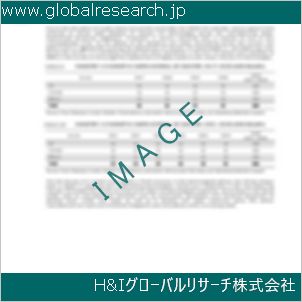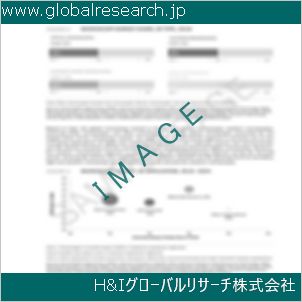Table of Contents
1 Industry Overview of Zinc
1.1 Definition and Specifications of Zinc
1.1.1 Definition of Zinc
1.1.2 Specifications of Zinc
1.2 Classification of Zinc
1.3 Applications of Zinc
1.3.1 Nuclear Application
1.3.2 Non-Nuclear Application
1.4 Industry Chain Structure of Zinc
1.5 Industry Overview and Major Regions Status of Zinc
1.5.1 Industry Overview of Zinc
1.5.2 Global Major Regions Status of Zinc
1.6 Industry Policy Analysis of Zinc
1.7 Industry News Analysis of Zinc
2 Manufacturing Cost Structure Analysis of Zinc
2.1 Raw Material Suppliers and Price Analysis of Zinc
2.2 Equipment Suppliers and Price Analysis of Zinc
2.3 Labor Cost Analysis of Zinc
2.4 Other Costs Analysis of Zinc
2.5 Manufacturing Cost Structure Analysis of Zinc
2.6 Manufacturing Process Analysis of Zinc
3 Technical Data and Manufacturing Plants Analysis of Zinc
3.1 Capacity and Commercial Production Date of Global Zinc Major Manufacturers in 2023
3.2 Manufacturing Plants Distribution of Global Zinc Major Manufacturers in 2023
3.3 R&D Status and Technology Source of Global Zinc Major Manufacturers in 2023
3.4 Raw Materials Sources Analysis of Global Zinc Major Manufacturers in 2023
4 Capacity, Production and Revenue Analysis of Zinc by Regions, Types and Manufacturers
4.1 Global Capacity, Production and Revenue of Zinc by Regions 2019-2024
4.2 Global and Major Regions Capacity, Production, Revenue and Growth Rate of Zinc 2019-2024
4.3 Global Capacity, Production and Revenue of Zinc by Types 2019-2024
4.4 Global Capacity, Production and Revenue of Zinc by Manufacturers 2019-2024
5 Price, Cost, Gross and Gross Margin Analysis of Zinc by Regions, Types and Manufacturers
5.1 Price, Cost, Gross and Gross Margin Analysis of Zinc by Regions 2019-2024
5.2 Price, Cost, Gross and Gross Margin Analysis of Zinc by Types 2019-2024
5.3 Price, Cost, Gross and Gross Margin Analysis of Zinc by Manufacturers 2019-2024
6 Consumption Volume, Consumption Value and Sale Price Analysis of Zinc by Regions, Types and Applications
6.1 Global Consumption Volume and Consumption Value of Zinc by Regions 2019-2024
6.2 Global and Major Regions Consumption Volume, Consumption Value and Growth Rate of Zinc 2019-2024
6.3 Global Consumption Volume and Consumption Value of Zinc by Types 2019-2024
6.4 Global Consumption Volume and Consumption Value of Zinc by Applications 2019-2024
6.5 Sale Price of Zinc by Regions 2019-2024
6.6 Sale Price of Zinc by Types 2019-2024
6.7 Sale Price of Zinc by Applications 2019-2024
6.8 Market Share Analysis of Zinc by Different Sale Price Levels
7 Supply, Import, Export and Consumption Analysis of Zinc
7.1 Supply, Consumption and Gap of Zinc 2019-2024
7.2 Global Capacity, Production, Price, Cost, Revenue, Supply, Import, Export and Consumption of Zinc 2019-2024
7.3 USA Capacity, Production, Price, Cost, Revenue, Supply, Import, Export and Consumption of Zinc 2019-2024
7.4 EU Capacity, Production, Price, Cost, Revenue, Supply, Import, Export and Consumption of Zinc 2019-2024
7.5 China Capacity, Production, Price, Cost, Revenue, Supply, Import, Export and Consumption of Zinc 2019-2024
7.6 Japan Capacity, Production, Price, Cost, Revenue, Supply, Import, Export and Consumption of Zinc 2019-2024
8 Major Manufacturers Analysis of Zinc
8.1 Manufacturer One
8.1.1 Company Profile
8.1.2 Product Picture and Specifications
8.1.2.1 Type I
8.1.2.2 Type II
8.1.2.3 Type III
8.1.3 Capacity, Production, Price, Cost, Gross and Revenue
8.1.4 Contact Information
8.2 Manufacturer Two
8.2.1 Company Profile
8.2.2 Product Picture and Specifications
8.2.2.1 Type I
8.2.2.2 Type II
8.2.2.3 Type III
8.2.3 Capacity, Production, Price, Cost, Gross and Revenue
8.2.4 Contact Information
8.3 Manufacturer Three
8.3.1 Company Profile
8.3.2 Product Picture and Specifications
8.3.2.1 Type I
8.3.2.2 Type II
8.3.2.3 Type III
8.3.3 Capacity, Production, Price, Cost, Gross and Revenue
8.3.4 Contact Information
8.4 Manufacturer Four
8.4.1 Company Profile
8.4.2 Product Picture and Specifications
8.4.2.1 Type I
8.4.2.2 Type II
8.4.2.3 Type III
8.4.3 Capacity, Production, Price, Cost, Gross and Revenue
8.4.4 Contact Information
8.5 Manufacturer Five
8.5.1 Company Profile
8.5.2 Product Picture and Specifications
8.5.2.1 Type I
8.5.2.2 Type II
8.5.2.3 Type III
8.5.3 Capacity, Production, Price, Cost, Gross and Revenue
8.5.4 Contact Information
…
9 Marketing Trader or Distributor Analysis of Zinc
9.1 Marketing Channels Status of Zinc
9.2 Traders or Distributors with Contact Information of Zinc by Regions
9.3 Ex-work Price, Channel Price and End Buyer Price Analysis of Zinc
9.4 Regional Import, Export and Trade Analysis of Zinc
10 Industry Chain Analysis of Zinc
10.1 Upstream Major Raw Materials Suppliers Analysis of Zinc
10.1.1 Major Raw Materials Suppliers with Contact Information Analysis of Zinc
10.1.2 Major Raw Materials Suppliers with Supply Volume Analysis of Zinc by Regions
10.2 Upstream Major Equipment Suppliers Analysis of Zinc
10.2.1 Major Equipment Suppliers with Contact Information Analysis of Zinc
10.2.2 Major Equipment Suppliers with Product Pictures Analysis of Zinc by Regions
10.3 Downstream Major Consumers Analysis of Zinc
10.3.1 Major Consumers with Contact Information Analysis of Zinc
10.3.2 Major Consumers with Consumption Volume Analysis of Zinc by Regions
10.4 Supply Chain Relationship Analysis of Zinc
11 Development Trend of Analysis of Zinc
11.1 Capacity, Production and Revenue Forecast of Zinc by Regions and Types
11.1.1 Global Capacity, Production and Revenue of Zinc by Regions 2024-2029
11.1.2 Global and Major Regions Capacity, Production, Revenue and Growth Rate of Zinc 2024-2029
11.1.3 Global Capacity, Production and Revenue of Zinc by Types 2024-2029
11.2 Consumption Volume and Consumption Value Forecast of Zinc by Regions, Types and Applications
11.2.1 Global Consumption Volume and Consumption Value of Zinc by Regions 2024-2029
11.2.2 Global and Major Regions Consumption Volume, Consumption Value and Growth Rate of Zinc 2024-2029
11.2.3 Global Consumption Volume and Consumption Value of Zinc by Types 2024-2029
11.2.4 Global Consumption Volume and Consumption Value of Zinc by Applications 2024-2029
11.3 Supply, Import, Export and Consumption Forecast of Zinc
11.3.1 Supply, Consumption and Gap of Zinc 2024-2029
11.3.2 Global Capacity, Production, Price, Cost, Revenue, Supply, Import, Export and Consumption of Zinc 2024-2029
11.3.3 USA Capacity, Production, Price, Cost, Revenue, Supply, Import, Export and Consumption of Zinc 2024-2029
11.3.4 EU Capacity, Production, Price, Cost, Revenue, Supply, Import, Export and Consumption of Zinc 2024-2029
11.3.5 China Capacity, Production, Price, Cost, Revenue, Supply, Import, Export and Consumption of Zinc 2024-2029
11.3.6 Japan Capacity, Production, Price, Cost, Revenue, Supply, Import, Export and Consumption of Zinc 2024-2029
12 New Project Investment Feasibility Analysis of Zinc
12.1 New Project SWOT Analysis of Zinc
12.2 New Project Investment Feasibility Analysis of Zinc
13 Conclusion of the Global Zinc (CAS 7440-66-6) Industry 2024 Market Research Report
| ※参考情報 亜鉛(Zinc)は、原子番号30、化学記号Znで表される金属元素です。自然界では鉱石の形で広く存在し、特に亜鉛鉱石(スファレライト、ザンク鉱石など)から採掘されます。金属としては銀白色を呈し、柔らかく加工しやすい特性を持っています。亜鉛は、周期表では遷移金属に分類され、さまざまな化合物を形成する能力を持ちます。 亜鉛の主な特徴の一つは、その耐腐食性です。亜鉛は、特に酸素や水分との反応によって表面に保護的な酸化亜鉛の層を生成し、内側の金属が腐食するのを防ぎます。この性質から、亜鉛は金属の防食剤として広く利用されています。また、亜鉛は温度変化に対する耐久性もあり、工業用途において重要な材料です。 亜鉛には、いくつかの異なる形態があります。その中でも特に一般的なものは、純亜鉛と合金としての亜鉛です。合金亜鉛は、アルミニウム、銅、マグネシウムなどの金属と組み合わされることが多く、鉄や鋼との合金(例:亜鉛亜鉛めっき)として使用されます。また、亜鉛はさまざまな化合物を形成し、亜鉛酸化物・亜鉛硫化物・亜鉛塩などが知られています。これらの化合物は、主に化学製品や医薬品、産業用途にも使用されます。 亜鉛の用途は非常に多岐にわたります。最も一般的な用途は防錆処理です。亜鉛メッキは、鉄鋼製品の表面に亜鉛の層を施すことで防食効果を得る技術で、建設業や製造業、日常用品に至るまで広く利用されています。また、自動車や船舶の部品の防錆処理にも重要な役割を果たしています。 医療分野でも亜鉛は重要な役割を担っています。亜鉛は人体に必要な微量元素であり、免疫機能、傷の治癒、DNA合成などに寄与します。亜鉛不足は免疫力低下や成長障害などを引き起こすため、サプリメントや栄養補助食品としても利用されています。また、亜鉛化合物は抗感染剤や皮膚治療薬としても用いられます。 亜鉛の関連技術としては、亜鉛電池があります。亜鉛電池は、亜鉛とマンガン酸化物などを用いた二次電池で、高エネルギー密度を持ち、リサイクルが容易な特性があります。これにより、蓄電市場でも亜鉛の重要性が高まっています。さらに、亜鉛空気電池は、亜鉛を陽極に使用し、酸素を陰極とした電池で、高い効率が期待されています。 また、亜鉛は再生可能エネルギー分野への応用も進んでいます。亜鉛が主成分となるフロー電池は、エネルギー貯蔵システムとして注目され、太陽光発電や風力発電との組み合わせで効率的な電力供給が可能となることが期待されています。これにより、亜鉛は持続可能なエネルギー戦略の一部として重要な役割を果たすでしょう。 亜鉛の生産方法も多様です。主に鉱石からの精製によって得られますが、電解法や熱還元法によりより高純度の亜鉛を製造することも可能です。電解法は、亜鉛イオンを含む電解液に電流を流すことで亜鉛金属を析出させる方法で、純度が高く経済的な利点があります。 最後に、亜鉛はそのリサイクルの可能性でも注目されています。亜鉛は使用後に再利用が可能であり、環境保護の観点からも重要な金属です。リサイクル過程で得られた亜鉛は、再度さまざまな用途に使用することができ、持続可能な資源循環の一環として位置づけられています。 このように、亜鉛は特性、用途、関連技術の多様性を持つ重要な金属であり、産業から医療、エネルギーまでさまざまな分野での利用が増加しています。今後もグリーン技術の進展とともに、亜鉛の役割はさらに拡大していくことでしょう。 |
❖ 免責事項 ❖
http://www.globalresearch.jp/disclaimer












